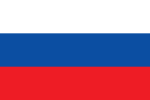Statue of Janko Kráľ
1964 sculpturesBuildings and structures in BratislavaCulture in BratislavaOutdoor sculptures in SlovakiaSlovak building and structure stubs ... and 1 more
Stone sculptures

Statue of Janko Kráľ is located in the middle of Sad Janka Kráľa (literally Janko Kráľ Park/Garden) in the Petržalka borough in Bratislava, Slovakia. Janko Kráľ was one of the most significant and most radical Slovak romantic poets of the Ľudovít Štúr generation and a national revivalist. It is not exactly known how he looked, but several popular supposed pictures of him exist. One of them was used as a model for this statue from academic sculptor František Gibala., in 1964.
Excerpt from the Wikipedia article Statue of Janko Kráľ (License: CC BY-SA 3.0, Authors, Images).Statue of Janko Kráľ
Viedenská cesta, Bratislava Dvory (District of Bratislava V)
Geographical coordinates (GPS) Address Nearby Places Show on map
Geographical coordinates (GPS)
| Latitude | Longitude |
|---|---|
| N 48.133333333333 ° | E 17.1 ° |
Address
Incheba Expo Bratislava (Trade Fair Bratislava)
Viedenská cesta 3-7
851 01 Bratislava, Dvory (District of Bratislava V)
Region of Bratislava, Slovakia
Open on Google Maps









